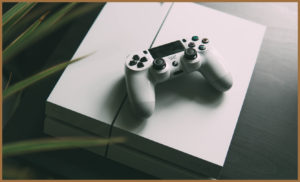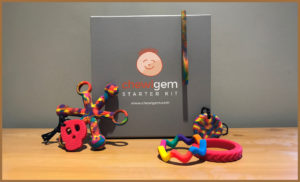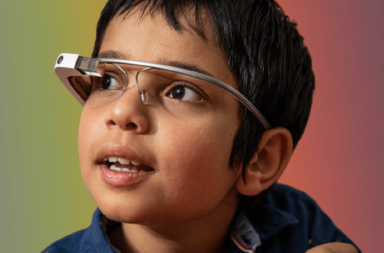Issues with sensory processing disorder and finding the best sensory toys for people with autism are two of the most frequent email topics I receive. Understandably, many people want to know what it is that makes their loved ones chew and, whilst I have always done my best to explain where sensory processing disorders come from and how they affect people with autism, the reality is, most don’t want to know where it comes from, but how it can be controlled.
With the support of sensory toy developer Chewigem, today I aim to explain how sensory processing disorders affect autistic people and provide some information on how to pick the perfect sensory toy for someone with autism.

What are Sensory Processing Disorders?
Whilst the existence of sensory processing disorders is often debated by much smarter minds (as some believe they are symptoms and not conditions themselves), it’s hard to imagine anyone who would disagree that the punishing effects they have on autistic people is very much real.
As the current definition goes, a sensory processing disorder can be described as something or somethings which can affect the brain interpretation of any one of the 21 senses (yes, there are more than 5 senses e.g. temperature, balance, hunger – look it up). In most cases, this usually comes at the discomfort of the person processing the senses and, more often than not, the person on the receiving end is autistic.
For this reason, it’s not uncommon for places to host autism-friendly events such as Autism Hours; where additional effort is put in to reduce any overwhelming senses and it’s also the reason why many autistic people will be recommended sensory processing toys; tools which have a proven track record of supporting people with particular needs.
In particular, sensory toys often help suppress sensory processing disorders to do with taste e.g. Pica (a condition which causes people to eat things they really shouldn’t e.g. mud and sand). This is important as, whilst taste related sensory processing disorders aren’t exclusive to people with autism (as pregnant women are also susceptible to then), autistic people may struggle to control their urges and as such risk chewing on dangerous items.
This means that, if left unsupported, an autistic person with a sensory processing disorder like Pica may inadvertently ingest harmful substances leading to poisoning, internal blockages or choking.

(Photo Credit: Chewigem)
When Sensory Toys aren’t for Sensory Processing Disorders:
Sensory processing disorders aren’t the only reasons why autistic people chew things, however. It can also be the case that strong emotions such as stress, anxiety or anger will result in unpredictable eating habits.
This was particularly the case for me growing up as, whilst I never had any sensory toys, I did have a PlayStation controller (which is a toy) and I did chew the hell out of it when I got worked up (which I guess makes it sensory relieving). This usually occurred before a meltdown and although most would assume it was me getting out my anger, it was quite the opposite, as I found the texture of the rubber against my teeth soothing.
Despite this, I should probably state that using a game controller as a sensory toy is not a good idea as, on more than one occasion, parts would rip off and become lodged in my windpipe – something which, in retrospect, has made me appreciate just how useful it is to have something dedicated specifically so Sensory stimulation.
But with so many different reasons to have a sensory toy, how is it possible to find the perfect one for someone with autism?

How to find the Perfect Sensory Toy for Autism?
In truth, there really is no perfect ‘one-size-fits-all’ product when it comes to finding the best sensory toy for autism. This is because, as I hope I have shown, there are so many factors to consider before the right sensory toy can be found e.g. how regularly it is being used? What emotion is it being used to resolve/control? Even how willing the person is to be seen with a sensory toy.
This is something I realised when, by chance, I met a mother whose autistic son had a sensory processing disorder. Who, despite ‘swearing by’ how useful the toys were, was clearly struggling to stop him from picking up stones from the ground to put in his mouth.
Whilst initially I chalked this up to the toys not being applicable to all, the mother explained that this was actually due to her only bringing a soft chewing sensory toy on that occasion and, as such, she didn’t have anything robust which would be capable of replacing the rocks. Nevertheless, the mother still stood by the power of sensory toys as she said things would have been much worse if she hadn’t brought any.
This showed me that not only is the success of sensory toys based on the individual, but it also depends on what that individual’s needs are on any specific day.

Where to find the Perfect Sensory Toys:
If today’s article has convinced you into giving sensory toys a shot, then I would highly recommend beginning your sensory processing journey with the toys offered by Chewigem: a brand who not only have one of the biggest selections of sensory processing products but also have a nifty ranking system, which states what their items are good for and how good they are at doing their job, making their site super accessible for newcomers.
Amongst the wide range of products which you will find on the Chewigem website, a few key items which I have tried (and can be found by clicking the bold red links) include:
- The Skull Chewable Necklace/ The Pink Cat Chew Necklace – which offer discrete sensory relief to those who don’t want their habits out in the open
- The Tread Chew Bracelet/ The Wave Bangle – two similar styles which offer entirely different levels of chew density
- The Chewipal Strap – for physically limited/disabled chewers who don’t want to miss out
- The Hexichew – A giant fidget spinner-esque toy which I personally haven’t put down since opening.
Finally, if all of these options still feel overwhelming, then Chewigem’s monthly subscription service might be something you want to consider, as it allows for multiple discounted products which come at regular intervals to help you on your Chewigem journey – the subscription box also comes with multiple additional goodies such as the Chewigem podcast, free shipping and more (which can be found on their site) and all-in-all provides the best value for money.
Once again, I want to make it clear that yes, I was sent a bunch of these sensory processing products in preparation for today’s article, but please don’t think this means my overwhelmingly positive thoughts are biased in any way. I have always had a highly selective attitude when picking what products to promote on Autistic & Unapologetic. Despite multiple cash and product offers, no amount of freebies will ever change the information I relay to you (unless, of course, Lamborghini wants to send a couple of cars my way).

Carry on the Conversation:
What are some of your experiences of using sensory toys? Let me know in the comments below.
As always, I can also be found on Twitter @AutismRevised and via my email: AutisticandUnapologetic@gmail.com.
If you like what you have seen on the site today, then show your support by liking the Autistic & Unapologetic Facebook page. Also, don’t forget to sign up to the Autistic & Unapologetic newsletter (found on the sidebar on laptops and underneath if you are reading this via mobile) where I share weekly updates as well as a fascinating fact I have found throughout the week.
Thank you for reading and I will see you next Saturday for more thoughts from across the spectrum.


